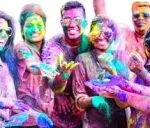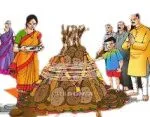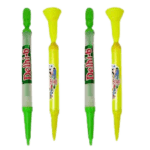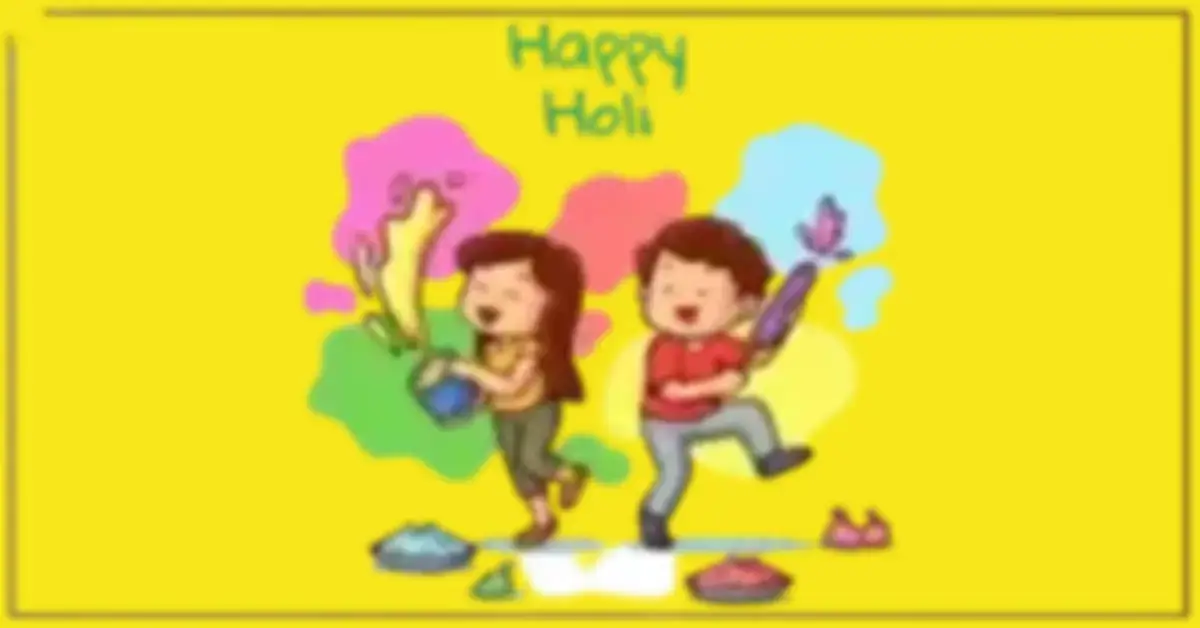HOLIKA DAHAN 2023
In this article we will share some informations about HOLI 2023 – IMPORTANT FESTIVAL OF INDIA. This year the entire world will celebrate Holi on Wednesday, Mar 8, 2023. Holika dahan will be celebrated on the previous da which falls on Tuesday, 7th March’2023. Holi ( the Festival of Colours, the Festival of Spring, and the Festival of Love ) is an annual festival which is celebrated on the full moon day (Purnima) of the Hindu month of Phalguna, which falls in February or March according to the Gregorian calendar.
Holi is famously celebrated in Mathura, the birthplace of Lord Krishna. All of Mathura is doused with colour and music. The most sought-after experience at this time, especially in the morning, is at the Dwarkadhish Temple.
Holi is of particular significance in the Braj region, which includes locations traditionally associated with the Krishna: Mathura, Vrindavan, Nandgaon, Uttar Pradesh, and Barsana, which become touristic during the season of Holi.
List Of 12 Different Types Of Holi Celebrations In India
- Lathmar Holi in Uttar Pradesh
- Dhulandi Holi in Haryana
- Phoolon Ki Holi in Vrindavan
- Rangpanchami in Maharashtra
- Royal Holi in Jaipur
- Basant Utsav in West Bengal
- Hola Mohalla in Anandpur, Punja
- Phalgun Purnima in Bihar
- Kaman Pandigai in Tamil Nadu
- Manjul Kuli in Kerala
- Shigmo in Goa
- Yosang in Manipur
Kweeli village, one of three villages where the festival of Holi is not celebrated in Rudraprayag district of Uttarakhand.
In India, every state, has its own way of celebrating Holi Festival, such as Lathmar Holi (UP), Hola Mohalla (Punjab), Phoolan ki Holi (Vrindavan), Vasant Utsav or Dol (West Bengal), Phalgun Purnima (Bihar), Shigmo (Goa), Manjal Kuli (Kerala), Yosang (Manipur), etc.
Traditionally, the people living in Tamil Nadu do not celebrate Holi as much as the residents of North India do.

HOLI 2023–IMPORTANT FESTIVAL OF INDIA
Holi represents the arrival of spring and the triumph of good over evil. It is also said to be the enactment of a game the Hindu god Lord Krishna played with his consort Radha and the gopis, or milkmaids.
The science of using natural colours like turmeric is to cleanse the body and remove unwanted accumulation on the skin. Holika Dahan, on the other hand, is performed to burn all that is dry and dirty to pave the way for new life in the spring. During the Covid 19 pandemic in the year 2021 and 2022 Holi was completely banned by the Govt of India.
Holi 2023 Date: When is Holi and its shubh muhurat? This year, Holi falls on March 8, and Holika Dahan falls on March 7. According to Drik Panchang, Purnima tithi begins at 04:17 pm on March 6 and ends at 06:09 pm on March 7. The Holika Dahan tithi will last from 06:24 pm to 08:51 pm on March 7.
IMPORTANCE, SIGNIFICANCE of Holi
Holi is an ancient Hindu festival. This is one of the most popular festivals in Hinduism. Holi is a symbol of love of god Radha and Krishna. The day also signifies the triumph of good over evil, as it commemorates the victory of god Vishnu as Narasimha Narayana over Hiranyakashipu.
It was originated and is predominantly celebrated in the Indian subcontinent but has also spread to other regions of Asia and parts of the Western world through the Indian diaspora. The indian diaspora living in and around the world celebrate this festivel in their own unique styles and traditions, but playing with colours are very common for everyone.
Holi celebrates the arrival of summer in India, the end of winter, the blossoming of love and for many, it is a festive day to meet others, play and laugh, forget and forgive, and repair broken relationships. The festival is also an invocation for a good spring harvest season. It lasts for a night and a day, starting on the evening of the Purnima (Full Moon Day) falling in the Hindu calendar month of Phalguna, which falls around the middle of March in the Gregorian calendar.
The first evening is known as “Holika Dahan” or “Chhoti Holi” and the following day as “Holi”, “Rangwali Holi”, “Dol Purnima”, “Dhuleti”, “Dhulandi”, “Ukuli”, “Manjal Kuli”, “Yaosang”, “Shigmo”, “Phagwah”, or “Jajiri”.
Holika Dahan
Holika Dahan is celebrated in the evening just before Holi. In Hindu Mythology, there was a Demon king named Hiranyakashyap. He had a sister named Demoness “Holika”. The king had a son named “ Prahlada “. Hiranyakashyap was an enemy of Lord “Vishnu”, but Prahlada was the biggest devotee of “Vishnu”. Hiranyakashyap was not happy with his son’s devotion towards Vishnu, so he planned to kill Prahlada with the help of his sister Demonees Holika.

Lord Brahma had gifted a shawl to Holika which can prevent her from burning fire. So Holika took Prahlada on her lap and sat on the bonfire with the shawl wrapped around her only, keeping Prahlad out of the shawl area. Prahlada started chanting the name of Vishnu and prayed to save him. Vishnu summoned a gust of wind and the shawl blown off from Holika and Prahlada was covered by it. Holika burnt to death with the fire and Prahlada remained unhurt.
Doing Holika puja on Holi bestows power, prosperity and wealth.
Chemicals used
Chemicals such as Lead Oxide, Chromium Iodide, Copper Sulphate, Mercury Sulphite and Aluminium Bromide are widely used in Holi colours to get various colour shades.
“A majority of people complain of bacterial skin infections, skin allergies, or contact dermatitis, rashes, itching, burning sensation, and hives after playing with Holi colours. The colours are made up of hazardous chemicals like mercury, asbestos, silica, mica, and lead which are toxic to the human skin and eyes.
Natural Colours
Using a natural colour ensures that you do not harm your skin, eyes and hair while playing Holi. The fake colours normally used during Holi are chemical based and can cause harm. Such colours can not only harm your skin, eyes, hair, etc; but also cause permanent disorder to your precious organs. The green is from neem and tulsi leaves, pinkish-red from rose petals and beetroot is used to make the purple Holi colour. “A major part of the production time goes into drying the floral waste since most flowers are collected in a wet or semi-wet condition.
Take properly dried hibiscus or China rose flowers and then grate them into a fine powder. Red sandalwood can also be used in its place. You can add rice flour uniform quantity to obtain dry red colour. You can boil peel of pomegranate to get wet colour. Many organic natural colours are also available to buy from Amazon, Flipkart etc.
Foods for Holi
On Holi, there are many foods that are specifically served to celebrate the festival of colors. Some of the most common include papri chaat, dahi vada, chana masala, puran poli, and besan papdi. Sweets are an all time premium choice for holy celebrations. You can find long lines at sweet shops.
Precautions
Precautions to Be Taken in Playing Holi
- Rub a thin layer of non-stick oil (preferably sunflower flowers oil as it has less density) around the exposed surfaces such as the neck, face, hands and legs at least half an hour before rushing off to play.
- Have your head covered in a bandana. Preferable apply a layer of oil on the head or some sticky hair gel in order to repel the colour.
- Protect your eyes from the colours. Remove your contact lens before you head of to playing Holi.
- Close your eyes when someone tries to splash colours. By doing these simple things you would be able to protect your pupils from any damage.
- Also, avoid clothing that absorbs water, you don’t want to be soaked for long in colours. Primarily because you want to avoid skin allergies.
Precautions to Be Taken After Playing Holi
- Make it a point to wash your selves thoroughly after playing Holi.
- You can use a nail polish remover to help remove stubborn colour stains.
- Avoid scrubbing your skin too hard, our skin gets sensitized when a colour(synthetic colour) makes contact. Scrubbing your skin too hard will only aggravate the skin condition making it worse.
- Avoid going out in the sun for the day after the shower.
- Also, if you’re eyes get itchy and red, or if your skin were to develop a rash, visit a doctor as early as possible. Don’t hesitate to seek medical attention.
- The precautions are simple. Yet Holi can be enjoyed in its true sense, only when we play it safe.
Pichkaris for kids
Pichkari or water gun is used by kids to play holi. The kids generally fill the pichkari with water colours and spray it to everyone.

Pichkari or water gun got patented by a NASA Engineer JW Wolff in 1896.
Since ancient times, Indians have used this gadget to make the festival of colours more enjoyable.
It is very important that parents should stay with the kids while they are playing holi with pichkari as the kids might spray the colours to by passers and unknowingly it might affect the eyes, nose or ears.
Hope you liked the article.
Thank you for visiting read4knowledge. Like, share and comment for regular updates. For other articles by read4knowledge click here
